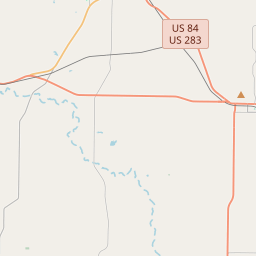Emma Daugherty Banister
Historical marker location:






(Oct. 20, 1871-June 4, 1956) The Daugherty family moved west in the late 1870s to Coleman County from present Forney in Kaufman County, where Emma was born. At age 14 she left home to finish school and obtain a teaching certificate in Goldthwaite. She married lawman and widower John R. Banister in 1894, and they raised nine children. Banister was Coleman County sheriff when he died in mid-1918, and Emma was chosen to complete his term of office to the end of 1918. Recorded - 1986
As one of the most visible programs of the Texas Historical Commission (THC), historical markers commemorate diverse topics in Texas history, including: the history and architecture of houses, commercial and public buildings, religious congregations, and military sites; events that changed the course of local and state history; and individuals who have made lasting contributions to the state, community organizations, and businesses.
The Texas Rangers, a famous law enforcement agency, were first organized in 1835 to protect settlers from Native American attacks.
In 1856, the Texas legislature created Coleman County, naming it after Robert M. Coleman, a signer of the Texas Declaration of Independence. The county was officially organized in 1864, and the town of Santa Anna was designated as the county seat. However, the arrival of the railroad in 1886 led to the development of the town of Coleman, which ultimately became the principal city and county seat.
During the late 19th and early 20th centuries, Coleman County experienced significant growth and prosperity. Cotton became a major cash crop, and ranching also played a crucial role in the local economy. The county's population grew, and new businesses and institutions, including schools and churches, were established.
Coleman County faced challenges as well, including periods of drought and the Great Depression of the 1930s. However, the local community persevered, and the county continued to develop over the years. Today, Coleman County remains an important agricultural and ranching center, while also embracing tourism and outdoor recreational activities as additional economic drivers. The county's rich history is commemorated through various historical sites and events, showcasing the enduring spirit of the community and its unique heritage.
Coleman County Timeline
This timeline provides a glimpse into the major events and milestones that have shaped the history of Coleman County, Texas.
- 1858 - Coleman County is established by the Texas legislature.
- 1876 - The town of Coleman is founded as the county seat.
- 1886 - The Santa Fe Railroad reaches Coleman, boosting the local economy.
- 1896 - Coleman County Courthouse, a significant historical landmark, is constructed.
- 1930-1939 - The Great Depression leads to economic challenges for Coleman County.
- 1940s-1950s - Coleman County experiences an increased interest in oil and gas exploration.
- 1986 - The Texas Railroad Commission names Coleman County the "Texas Top Oil Producing County".
- 1992 - A tornado causes significant damage in Coleman, resulting in the rebuilding of several structures.
- Present - Coleman County remains a vibrant community with a mix of agriculture, oil and gas, and tourism.